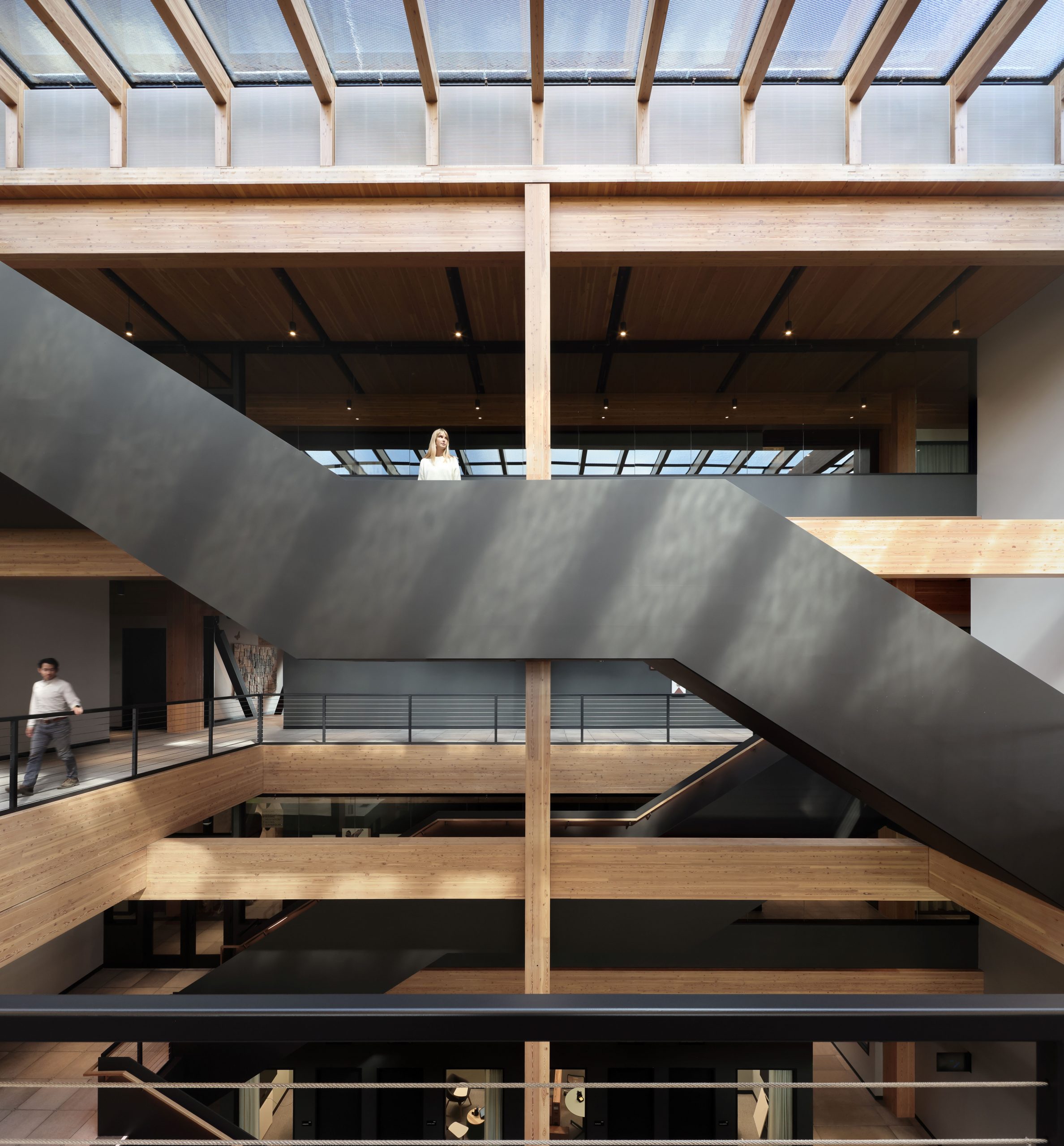Universal Design Series
Ambient Lighting Considerations In Stair Design
Recognizing the pivotal role of lighting in both aesthetics and safety, the second edition of our series explores a key element of universal stair design – ambient lighting.
The evolving landscape of modern interior design trends places a special emphasis on illuminating stairs, transforming them from practical installations to prominent architectural features. Recognizing the pivotal role of lighting in both aesthetics and safety, the second edition of our series explores a key element of universal stair design – ambient lighting. Beyond its aesthetic appeal, lighting plays a pivotal role in enhancing inclusivity, ensuring that staircases become more easily and safely navigable for users of all abilities.
THE IMPORTANCE OF CONSISTENT LIGHTING FOR SAFE STAIR USAGE
Without sufficient lighting, any stair user can struggle to see treads on stairs with dark or shaded surfaces, especially at the beginning or end of a run. For people with low vision (PLV), however, a lack of proper lighting is especially challenging. Stair lighting should be consistent and sufficiently illuminating to improve the detection of stairways and enhance visibility of stair edges. Detecting stairs, particularly when descending, becomes challenging without adequate illumination, emphasizing the importance of a well-thought-out lighting strategy.
“Lighting for stairways should be consistent and sufficiently illuminating to improve the detection of stairways and increase visibility of stair edges.”
– Universal Design Guidelines for Feature Stairs | Synergi
USING NATURAL LIGHT
Considerations:
Good stair design should consider how lighting at various times of day can interfere with stair use. For those with low vision, the visibility of stairs facing windows may depend on outside lighting conditions and whether users are facing the light.
- Avoid Glare/Shadows: Sunlight from windows can be distracting, and bright sunlight can hinder people’s ability to perceive their surroundings by creating shadows and/or shining light into the user’s field of view and causing glare.
- Consider How Light Changes Throughout The Day: Naturally lit stairs with after-hours traffic should provide an additional light source that allows users to see treads, risers, and handrails.
- Strobe Light Effect: Certain stair guardrail designs, such as picket rail, can filter natural light, causing a ‘strobe’ light effect, which can disable stair users’ field of vision while trying to ascend and descend stairs.
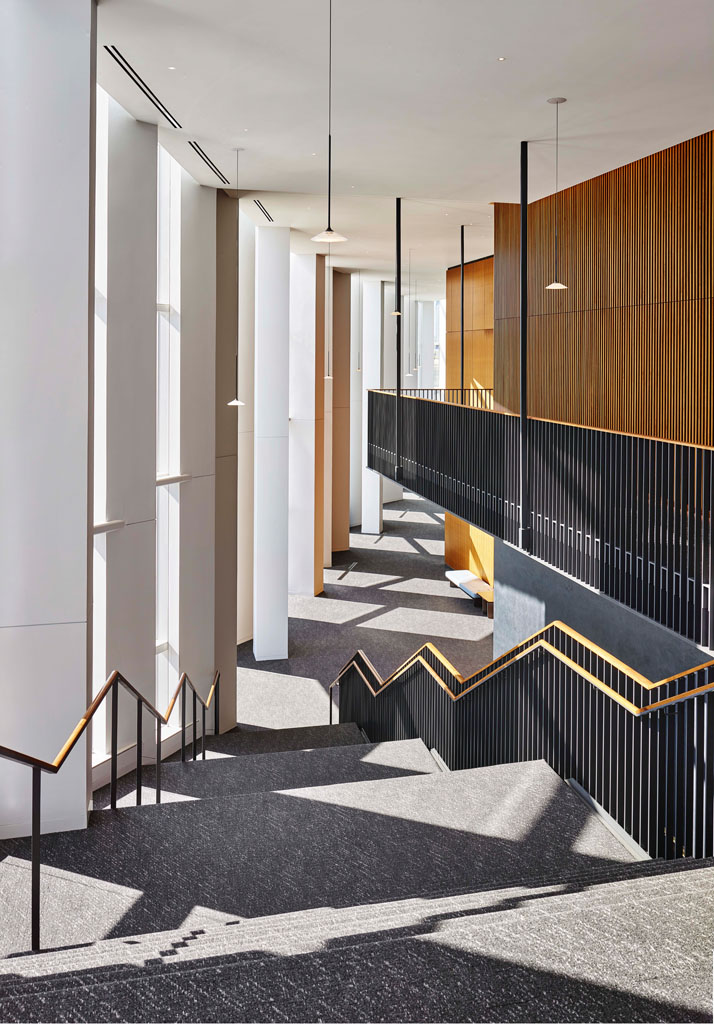
Natural light illuminates the stairs in this atrium at Capital One Hall.
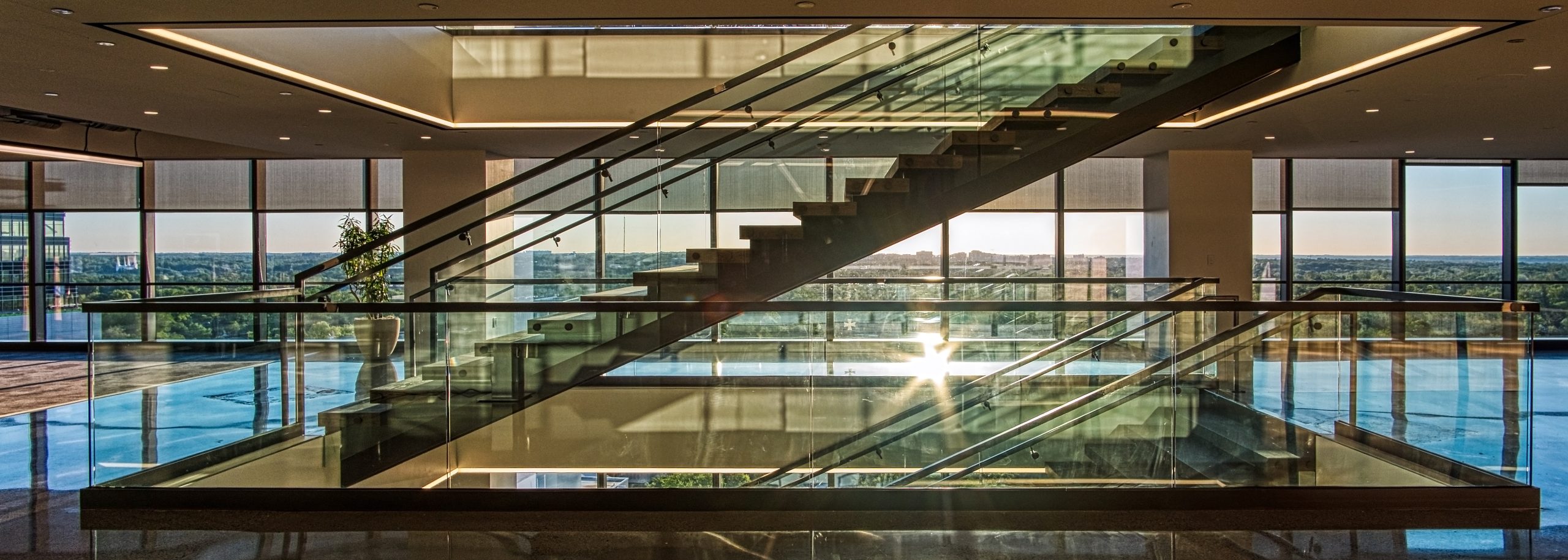
In the middle of the day, however, the sunlight can be quite blinding and cause glare.
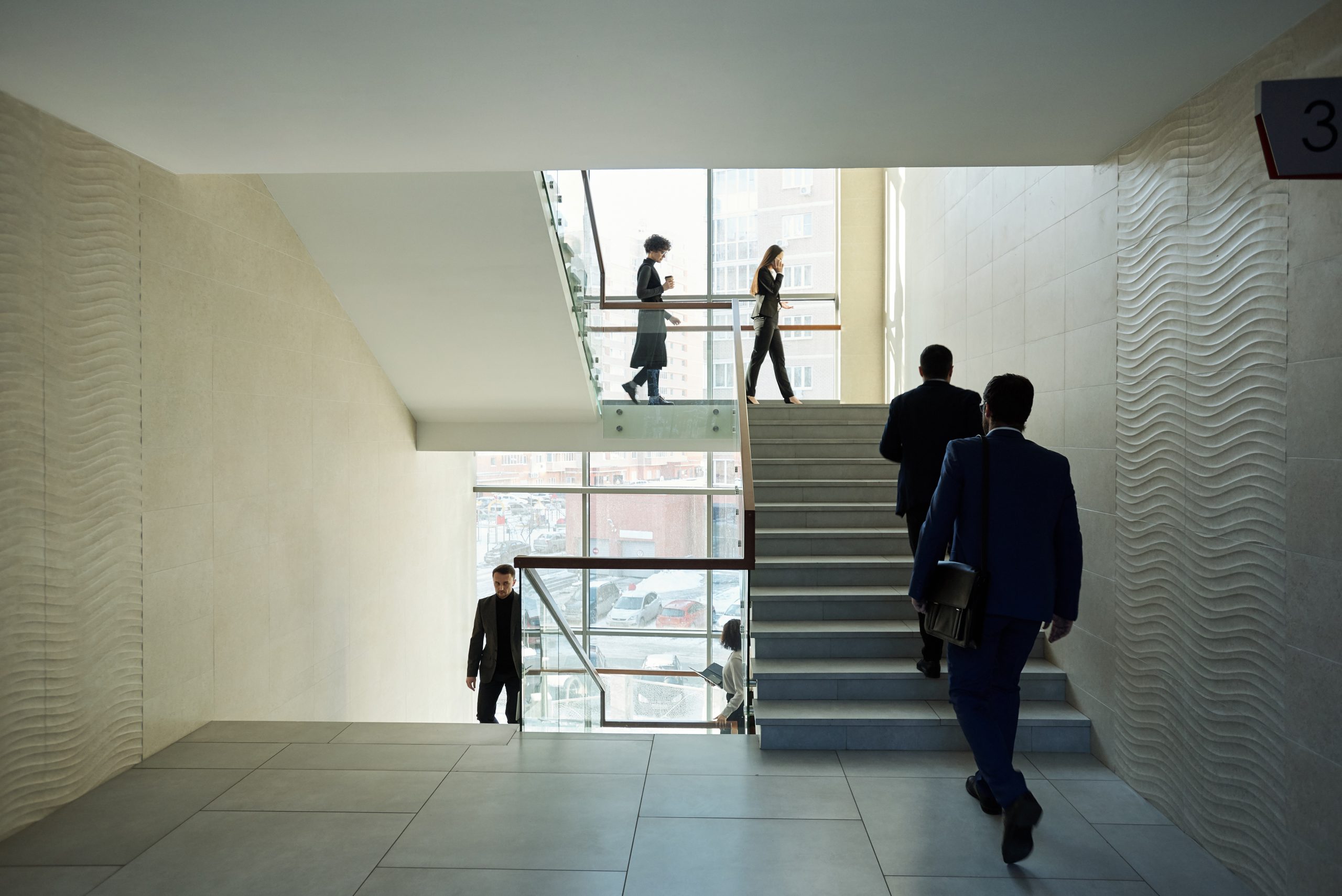
When relying on natural lighting, it’s important to consider how the stairs are lit during night hours. The above photo illustrates a well-lit stair during light hours.
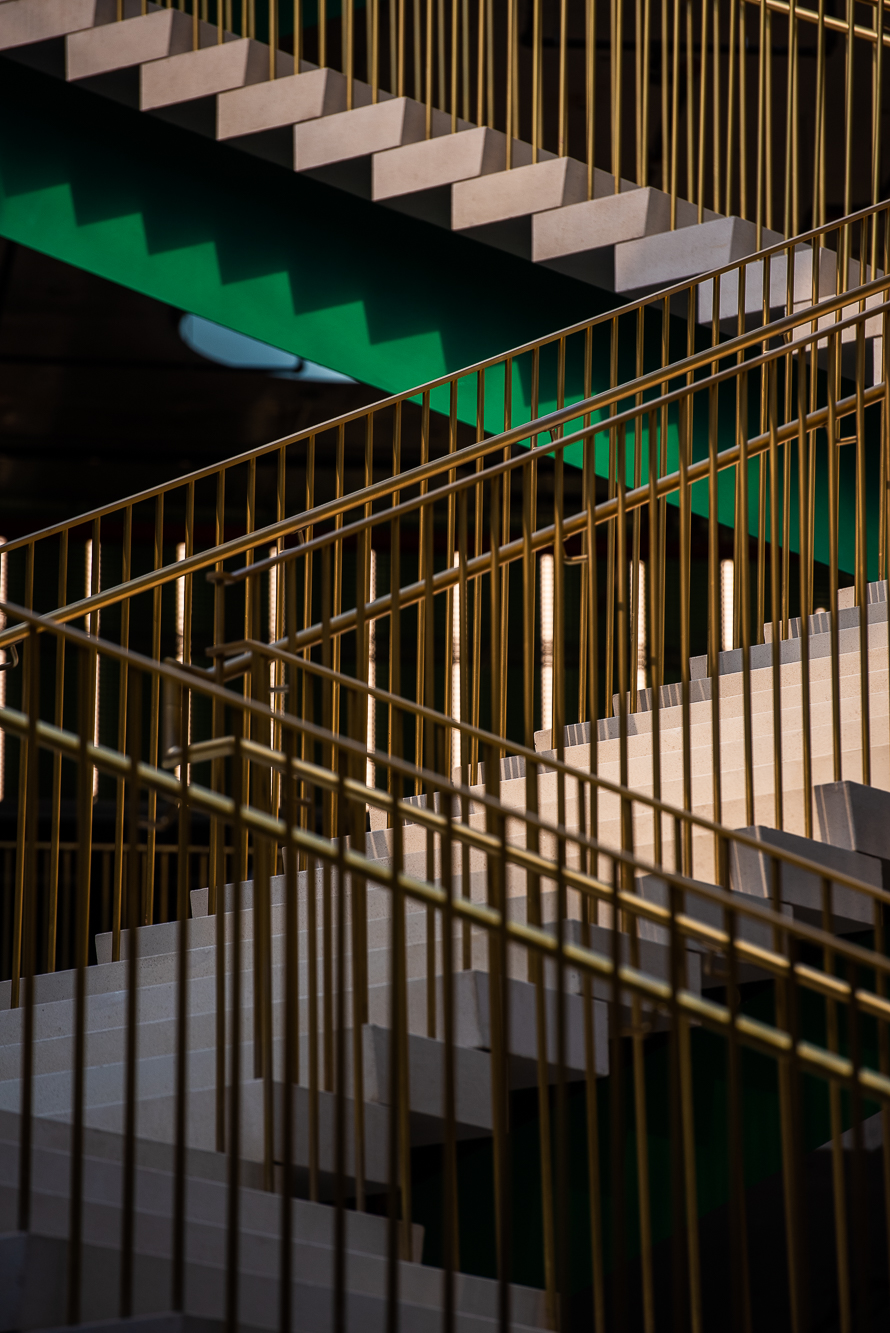
Picket railing can filter natural light, causing a ‘strobe’ light effect, which can disable stair users’ field of vision while trying to ascend and descend stairs.
USING ARTIFICIAL LIGHTING
Considerations:
Going beyond mere functionality, lighting can serve as a design element. Motion sensor night lights, lighted handrails, base lighting, and electroluminescent grip edges not only enhance visibility but also contribute to the overall aesthetics of the space.
- Stair Lighting Should Be Consistent: When considering universal design standards, stairway lighting should fall evenly on handrails and walking surfaces, and be controllable for consistent illumination.
- Controllability: Time-delay or sensor-operated lights are valuable additions, but their settings should accommodate the needs of all users, striking a balance between responsiveness and inclusivity.
- Be Mindful Of Directional Lighting: No stair users want to be blinded by lighting shining directly in their eyes. To avoid impairing stair users’ fields of vision, stair lighting should be designed to fall away from stair users’ direct line of sight.
- Lighting Illumination Levels: A key consideration in stair design is the recommended level of illumination. Soft light, with a minimum of 150 lux at tread level and at least 200 lux on stair landings, is suggested.
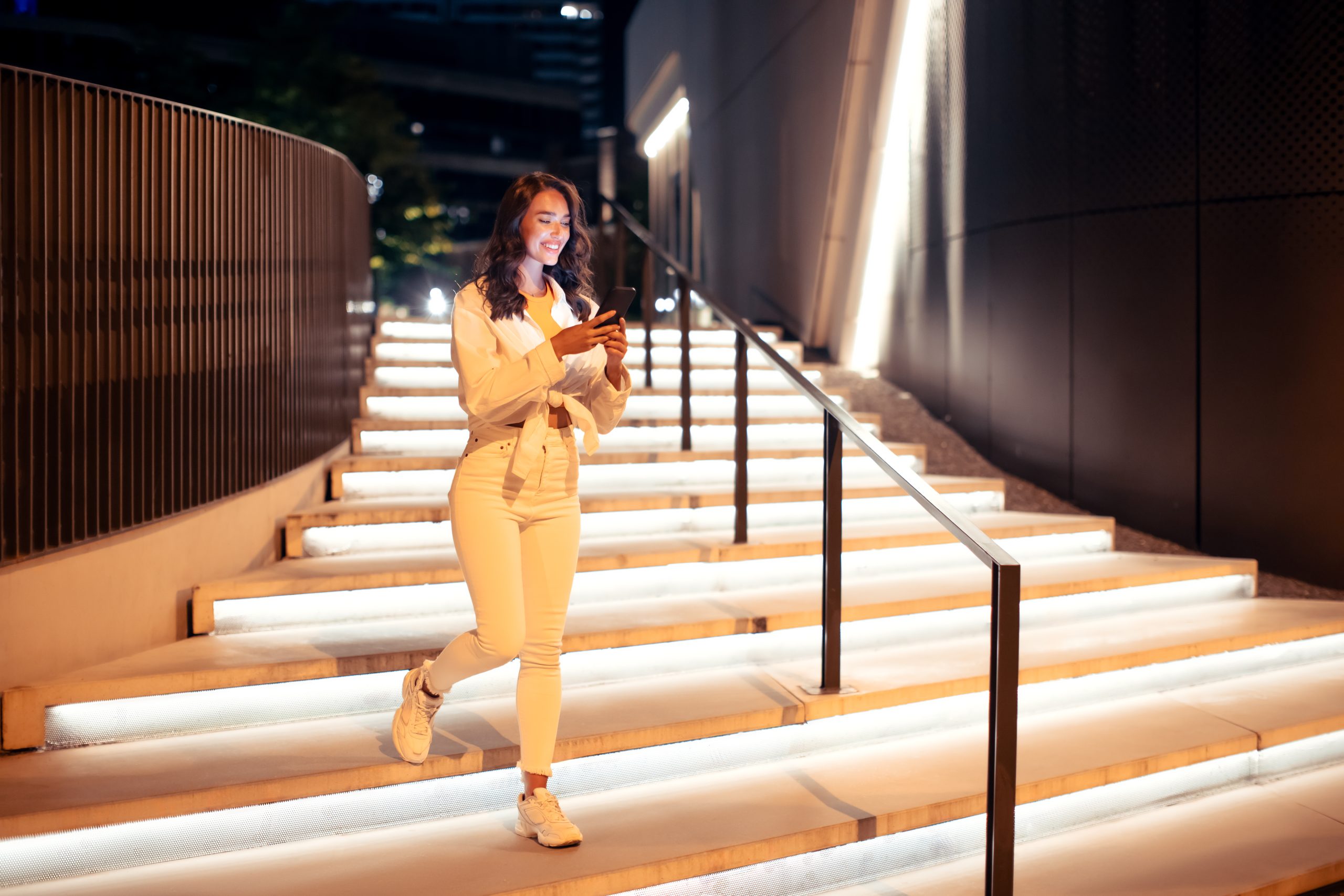
The lighting direction and illumination levels on this stair make it challenging for all stair users, not just PLVs.
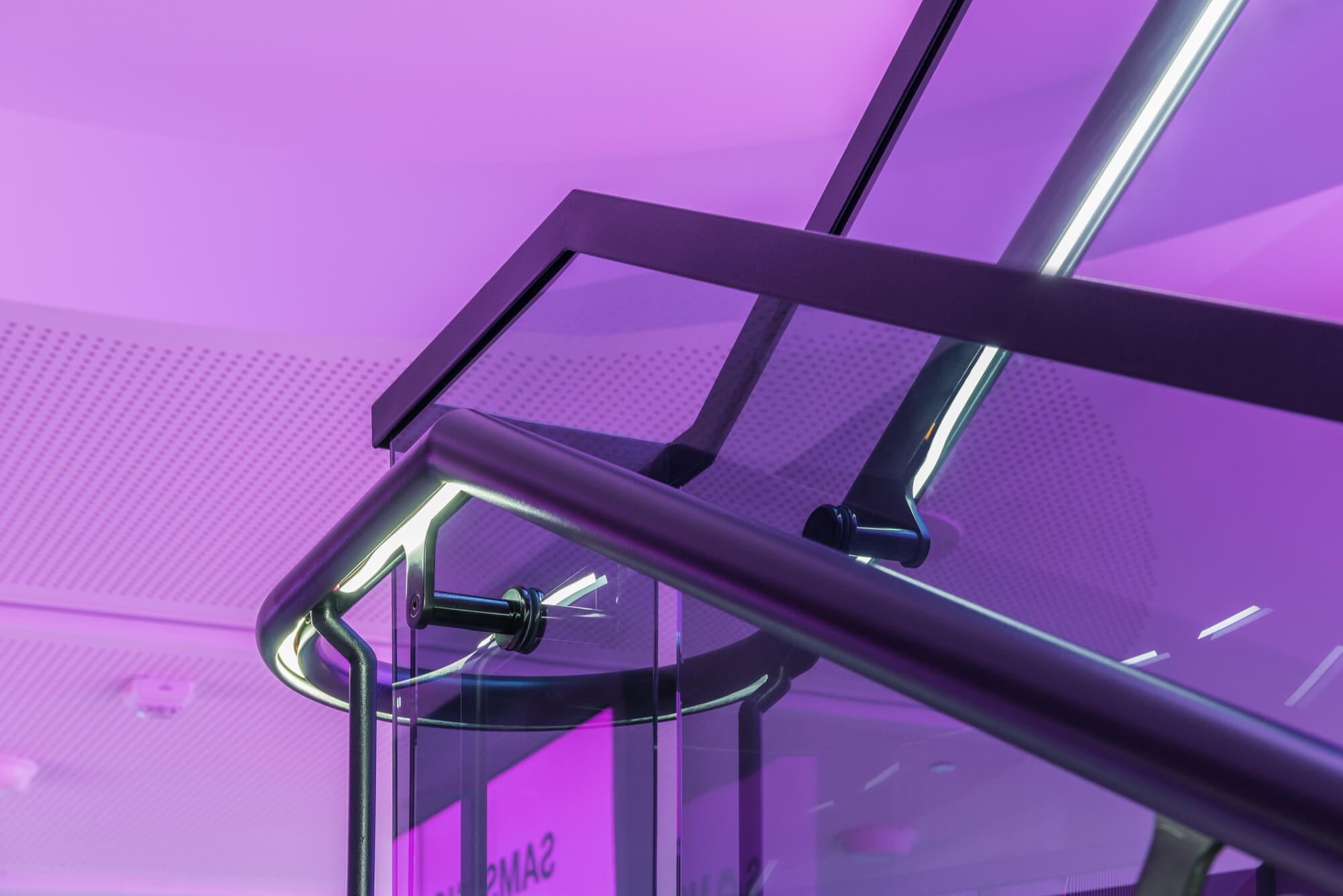
Lighted handrails at T-Mobile Headquarters in San Francisco.
By acknowledging the impact of natural light on stair use to protect stair users’ safety and confidence, we’re practicing universal design, which further contributes to creating built environments where the most people possible can participate and experience a sense of belonging. It is our hope at Synergi that – with education and awareness – architects, designers, building owners, and developers will take an interest in creating stairways that people are encouraged to use.
Stay tuned for the next part of this series, further exploring the ins and outs of Universal Design.
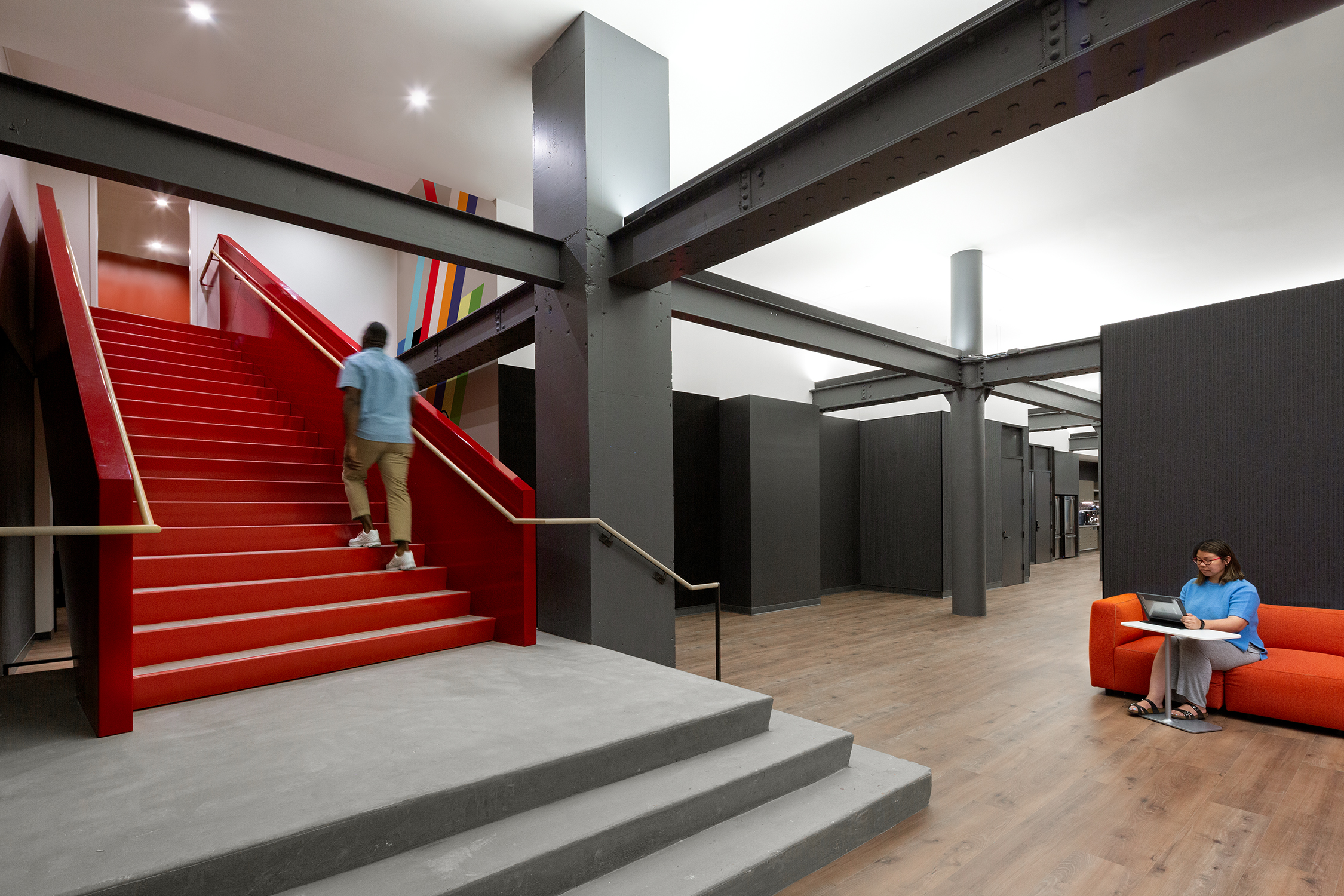
Looking Back: Stairs Unveiled in 2023 that Captured Our Hearts
